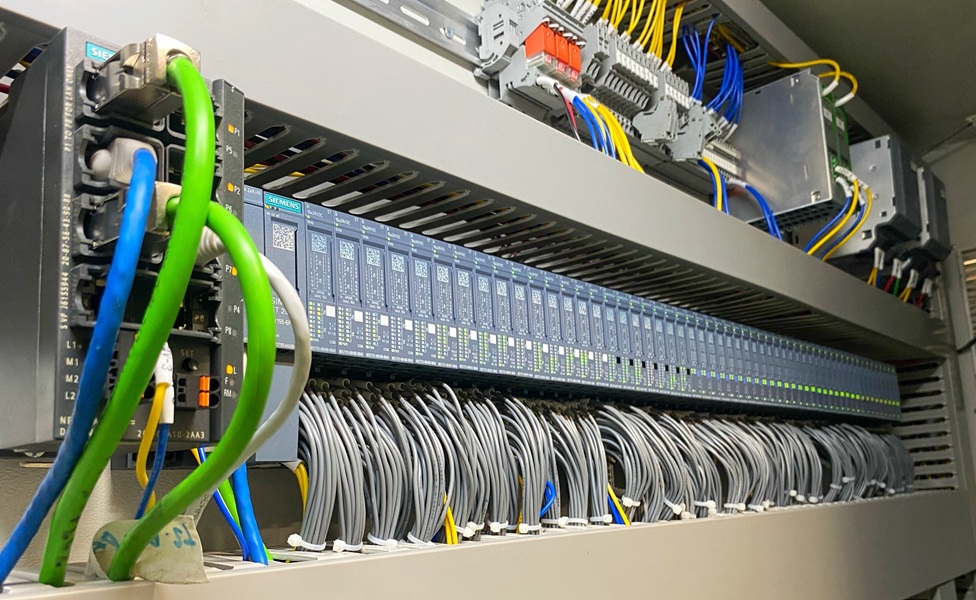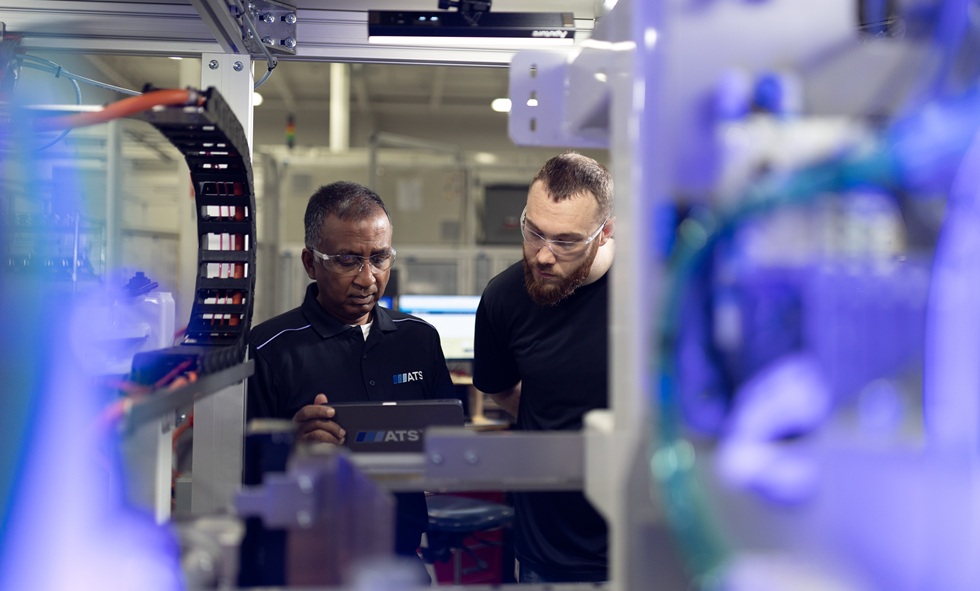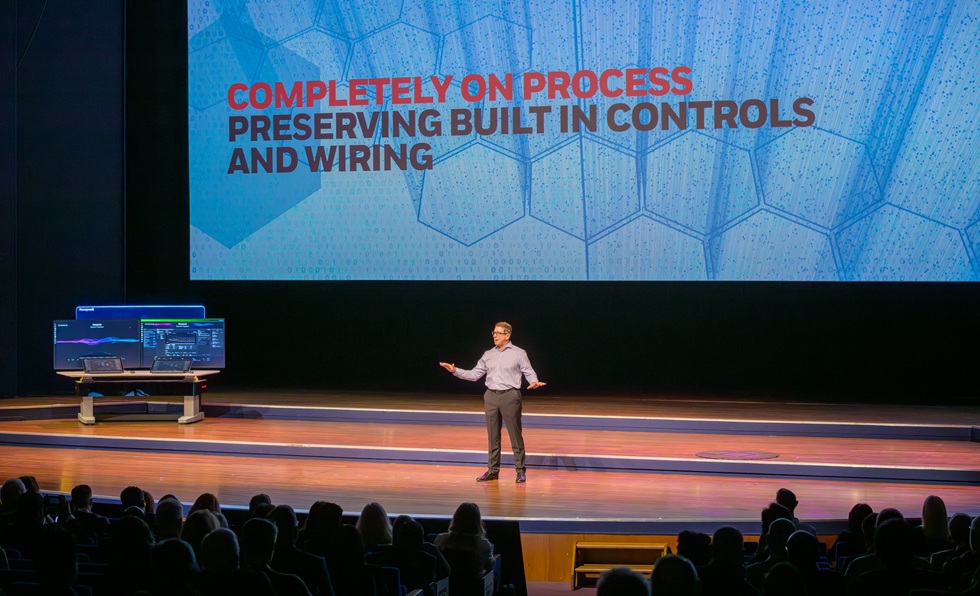Discrete event simulation is reshaping process design in manufacturing, replacing guesswork with data-driven certainty and unlocking significant untapped capacity. By creating accurate, dynamic models of complex processes, manufacturers can optimise throughput, reduce costs and enhance operational agility before a single piece of equipment is installed.
Scaling up from a successful bench synthesis to a fully operational plant producing thousands of kilograms of high-value chemical each year is rarely straightforward. Even with solid commercial agreements in place, the leap from laboratory to large-scale production demands a deep understanding of process interactions, equipment behaviour and staffing requirements. For Croda, the complexity of its multi-stage process meant that traditional calculation tools could not deliver the clarity or foresight needed to commit to a new facility design.
The company’s synthesis involved both batch and continuous processing, each with different cycle times and capacities. The challenge was not only to balance these steps but to optimise them in a way that would maximise throughput and free up valuable equipment for other products. While spreadsheets had helped to model individual steps, they could not dynamically reflect the variability, timing conflicts and interdependencies that define real-world operations. The risk was that decisions made at the design stage would lock in inefficiencies that could take years and significant investment to correct.
From static spreadsheets to dynamic modelling
The limitations of static models are well known to engineers who work on complex manufacturing systems. Fixed time intervals and simplified assumptions can hide inefficiencies, underestimate bottlenecks and obscure opportunities for optimisation. For Croda, this meant uncertainty over whether equipment and operators could support the intended production schedule without delays or under-utilisation.
“Croda had created a spreadsheet model and schedule for the production of a batch, which by necessity was simplified and included some assumptions about material transfer,” Michael Stephenson, Process Improvement Specialist at Production Support 56, says. “It became incredibly complex by the time you added in the third and fourth batch of material.
“As spreadsheets are static models, they can only take into account fixed, pre-set periods. They do not operate dynamically. Simulation provides a dynamic model that enables organisations to understand system variations and the KPIs used to measure them, along with the incorporation of variability and the ability to quickly build highly visual and animated representations of a system in action.”
In Croda’s case, the spreadsheet approach could not easily test whether two operators could manage all required tasks without overlap, nor could it pinpoint whether the spare 25 per cent of main reactor availability was truly usable for secondary production. These unknowns, if left unresolved, risked constraining both throughput and flexibility.
Creating a data-rich decision environment
The simulation project began with the fundamentals, block diagrams, material balances and batch papers, supported by in-depth process walkthroughs with Croda’s engineering team. A draft model was developed with placeholders for unknown performance data, giving the team a flexible framework to test early hypotheses. This initial phase revealed the value of rapid iteration, as engineers could adjust cycle times, vessel sizes and staffing assumptions directly in the model and see the impacts immediately.
“Knowing the material flow was enough information for us to draft a skeleton of the model,” Stephenson notes. “We built the draft simulation and used a dashboard so the engineer could define and change the unknown parts of the design. Giving them the power to build, measure and learn was a great benefit that gave him the autonomy to develop the simulation and drive the project forward.”
Training the process owner to use the model took just an hour. Over the next four weeks, Croda’s engineer ran multiple scenarios to balance the line, identify bottlenecks and adjust equipment sizing. The model simulated each vessel’s operational states, empty, filling, full, emptying and cleaning, to create a realistic control-board view of plant behaviour. This granularity allowed both engineers and senior managers to see exactly where delays could occur, how resources interacted, and where hidden opportunities lay.
Unlocking hidden capacity and value
One of the most significant findings was the potential to free up the main reactor for alternative products, generating an estimated £200,000 per year in additional revenue from the outset. The simulation also confirmed that two operators could run the facility efficiently, with only minimal delays to non-critical tasks.
“The model outputted a time chart with operator utilisation and displayed when a machine was waiting for an operator,” Stephenson says. “It also showed the length of gaps between main reactor usage and when it was available for other products. Compared to spreadsheets, simulations offer far greater insights, more accurately and much more quickly.”
This combination of resource validation and opportunity identification proved crucial when presenting the design to stakeholders. The visual and data-rich outputs made it easy to justify adjustments to production philosophy and secure additional investment in reactor availability. Crucially, these changes were made before construction began, avoiding the rework, delays and missed revenue that often accompany post-commissioning modifications.
Driving digital transformation in manufacturing
The benefits Croda achieved reflect a broader shift in manufacturing, where simulation-powered digital twins are moving from specialist tools to mainstream enablers of operational excellence.
“The manufacturing industry is undergoing intense change as organisations embrace new and emerging technologies,” Frances Sneddon, CTO at Simul8, says. “Simulation-powered digital twins interact to create a dynamic, data-driven environment for constant improvement and decision-making. Simplifying complex processes in rapid time, simulation and digital twins are transforming how manufacturing organisations make decisions, enabling faster and more accurate outcomes in an increasingly complex world.”
The role of DES extends beyond simple throughput modelling. By incorporating variability, resource constraints and changeover times, it creates a decision-making environment grounded in operational reality. This capability is increasingly vital in industries where production networks are complex, customer demands are volatile, and the cost of error is high.
From design assurance to continuous improvement
For Stephenson, the most effective simulation projects are those where the model is treated as a living asset rather than a one-off exercise. “We are involved in about two new facility design projects a year,” he notes. “They all start with the initial aim of convincing the engineering team that their design can meet a throughput target and then convincing their client to commission the design. They soon realise that the simulation can be used to optimise the plant, so we can reduce the capital cost and increase the throughput whilst the design is still on the drawing board.”
Once in place, a simulation model can continue to serve as a safe, experimental environment for process improvement. By running “what if” scenarios without disrupting live production, manufacturers can adapt more quickly to new product demands, equipment upgrades or supply chain constraints. As access to DES tools grows, the same benefits are becoming available to smaller organisations that may not have considered simulation feasible in the past.
Whether for scale-up validation, capacity optimisation or long-term operational agility, the Croda project demonstrates that the value of simulation lies not just in what it predicts, but in how it transforms decision-making. By replacing uncertainty with clarity and static assumptions with dynamic insight, simulation-powered digital twins are helping manufacturers build facilities that are not only fit for purpose today but adaptable for tomorrow.






